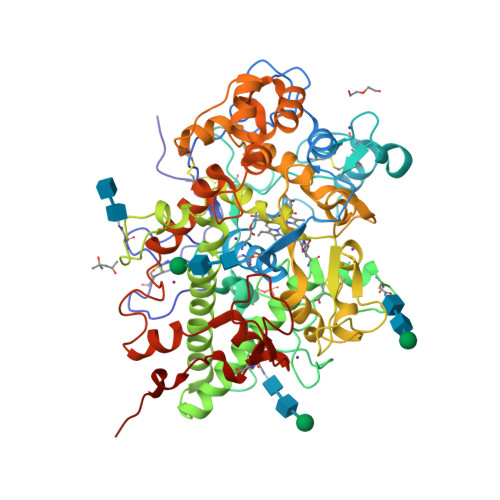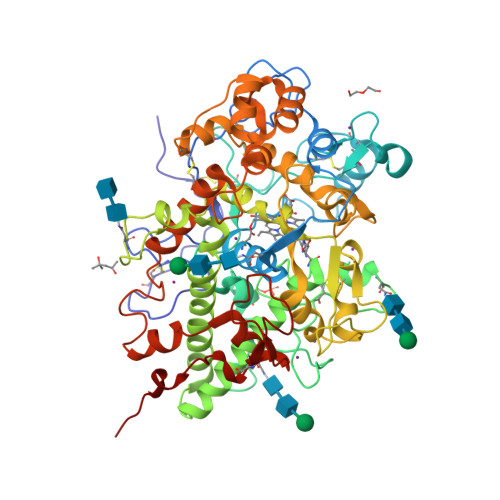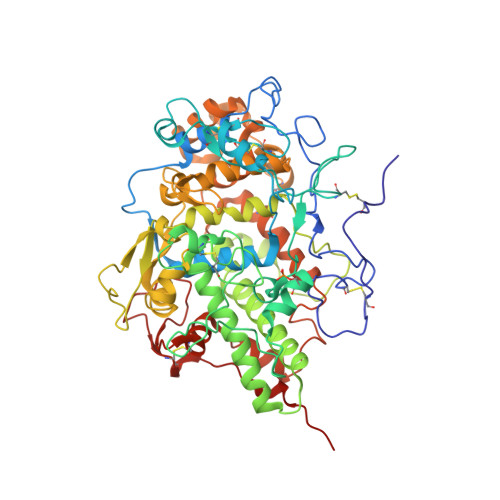First structural evidence for the mode of diffusion of aromatic ligands and ligand-induced closure of the hydrophobic channel in heme peroxidases
Singh, A.K., Singh, N., Tiwari, A., Sinha, M., Kushwaha, G.S., Kaur, P., Srinivasan, A., Sharma, S., Singh, T.P.(2010) J Biol Inorg Chem 15: 1099-1107
- PubMed: 20461536
- DOI: https://doi.org/10.1007/s00775-010-0669-3
- Primary Citation of Related Structures:
3KRQ - PubMed Abstract:
The mode of binding of aromatic ligands in the substrate binding site on the distal heme side in heme peroxidases is well understood. However, the mode of diffusion through the extended hydrophobic channel and the regulatory role of the channel are not yet clear. To provide answers to these questions, the crystal structure of the complex of lactoperoxidase and 3-amino-1,2,4-triazole (amitrole) has been determined, which revealed the presence of two ligand molecules, one in the substrate binding site and the second in the hydrophobic channel. The binding of ligand in the channel induced a remarkable conformational change in the side chain of Phe254, which flips from its original distant position to interact with the trapped ligand in the hydrophobic channel. As a result, the channel is completely blocked so that no ligand can diffuse through it to the substrate binding site. Another amitrole molecule is bound to lactoperoxidase in the substrate binding site by replacing three water molecules, including the crucial iron-bound water molecule, W1. In this arrangement, the amino nitrogen atom of amitrole occupies the position of W1 and interacts directly with ferric iron. As a consequence, it prevents the binding of H2O2 to heme iron. Thus, the interactions of amitrole with lactoperoxidase obstruct both the passage of ligands through the hydrophobic channel as well as the binding of H2O2. This explains the amitrole toxicity. From binding studies, the dissociation constant (Kd) for amitrole with lactoperoxidase was found to be approximately 5.5x10(-7) M, indicating high affinity.
Organizational Affiliation:
Department of Biophysics, All India Institute of Medical Sciences, Ansari Nagar, New Delhi, 110029, India.




























